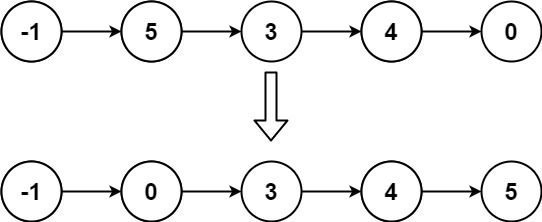
What is Insertion Sort?
Insertion sort is a straightforward sorting algorithm that constructs the final sorted array one item at a time. It operates by splitting the input array into two parts: sorted and unsorted. The method then continually inserts the first unsorted element into the right location in the sorted section, moving the remaining elements to make room.
Algorithm:
The algorithm works as follows:
- Let
arrbe the input array of lengthn - For i = 1 to n-1:
- a. Set
keyto the i-th element ofarr - b. Set
jto i-1 - c. While j >= 0 and arr[j] > key: i. Set arr[j+1] to arr[j] ii. Decrement j by 1
- d. Set arr[j+1] to key
- a. Set
- The sorted array is now
arr
The inner loop (step 2c) shifts the elements to the right to create the correct position for the current element. The outer loop (step 2) selects each element in turn and ensures that it is in the correct position.
Time Complexity:
- Worst case: O(n^2)
- Best case: Ω(n)
- Average case: Θ(n^2)
Implementation of the algorithm in Java:
public static void insertionSort(int[] arr) {
int n = arr.length;
for (int i = 1; i < n; i++) {
int key = arr[i];
int j = i - 1;
while (j >= 0 && arr[j] > key) {
arr[j+1] = arr[j];
j--;
}
arr[j+1] = key;
}
}Problems based on Insertion Sort:
- Given the
headof a singly linked list, sort the list using insertion sort, and return the sorted list’s head.
Example:

Input: head = [-1,5,3,4,0] Output: [-1,0,3,4,5]
Solution:
/**
* Definition for singly-linked list.
* public class ListNode {
* int val;
* ListNode next;
* ListNode() {}
* ListNode(int val) { this.val = val; }
* ListNode(int val, ListNode next) { this.val = val; this.next = next; }
* }
*/
class Solution {
public ListNode insertionSortList(ListNode head) {
if (head == null || head.next == null) {
return head;
}
ListNode dummy = new ListNode(0);
dummy.next = head;
ListNode sortedTail = head, curr = head.next;
while (curr != null) {
if (sortedTail.val <= curr.val) {
sortedTail = sortedTail.next;
} else {
ListNode prev = dummy;
while (prev.next.val <= curr.val) {
prev = prev.next;
}
sortedTail.next = curr.next;
curr.next = prev.next;
prev.next = curr;
}
curr = sortedTail.next;
}
return dummy.next;
}
}In the above implementation,
- we maintain two pointers –
sortedTailandcurr.sortedTailpoints to the last node in the sorted section, andcurrpoints to the first node in the unsorted section. - compare the value of
sortedTailwithcurr. IfsortedTail.valis less than or equal tocurr.val, thencurris already in the correct position, and we move bothsortedTailandcurrto their next nodes.
- Given a shuffled sentence
scontaining no more than9words, reconstruct, and return the original sentence.
For example, the sentence "This is a sentence" can be shuffled as "sentence4 a3 is2 This1" or "is2 sentence4 This1 a3".
Solution:
class Solution {
public String sortSentence(String s) {
String[] words = s.split(" ");
int n = words.length;
for (int i = 1; i < n; i++) {
String current = words[i];
int j = i - 1;
while (j >= 0 && getIndex(words[j]) > getIndex(current)) {
words[j+1] = words[j];
j--;
}
words[j+1] = current;
}
StringBuilder sb = new StringBuilder();
for (String word : words) {
sb.append(word.substring(0, word.length()-1)).append(" ");
}
sb.setLength(sb.length()-1); // remove the extra space at the end
return sb.toString();
}
private static int getIndex(String word) {
int len = word.length();
return Integer.parseInt(word.substring(len-1));
}
}- We began by dividing the shuffled phrase s into an array of words by using the space character as a delimiter.
- Then, using insertion sort, we run through the array and sort the words depending on their index, which we obtained using the getIndex helper method.
- Finally, we rebuild the original phrase by concatenating the sorted words without their indexes and returning the final string.
Note: also read about Selection Sort
Follow Me
Please follow me to read my latest post on programming and technology if you like my post.
https://www.instagram.com/coderz.py/
https://www.facebook.com/coderz.py
Staying up to the mark is what defines me. Hi all! I’m Rabecca Fatima a keen learner, great enthusiast, ready to take new challenges as stepping stones towards flying colors.
Leave a Comment
You must be logged in to post a comment.